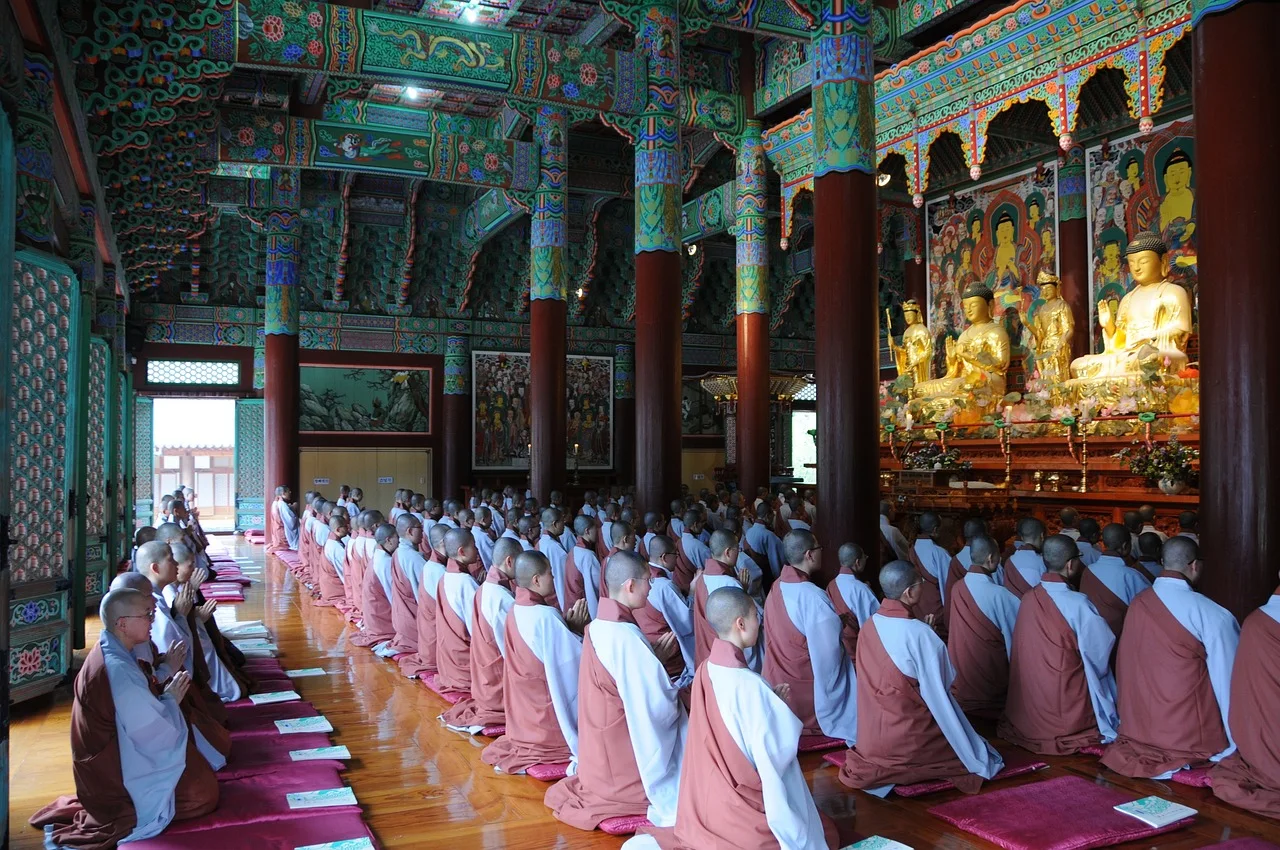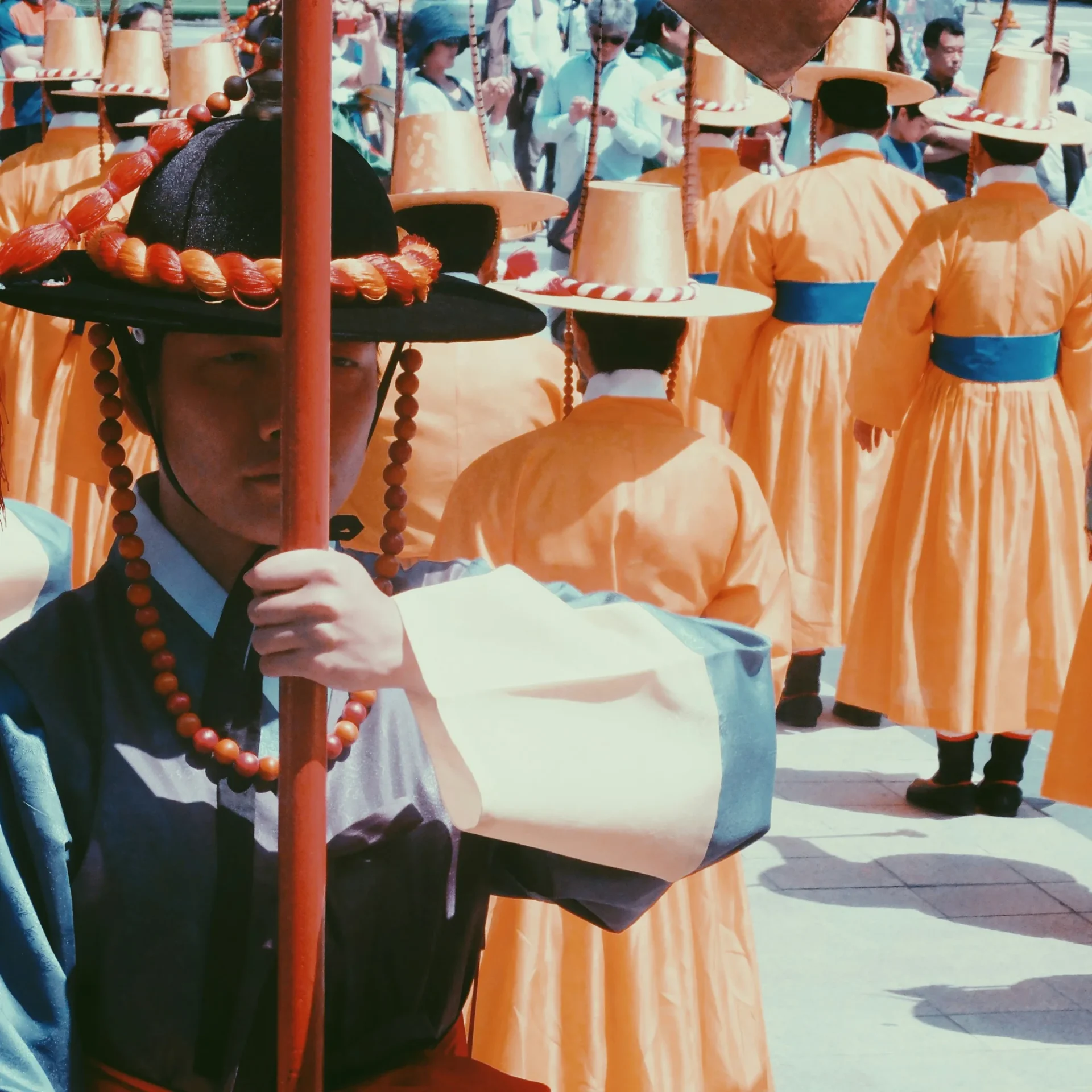South Korea’s history is a complex web of dynastic changes, cultural evolutions, and foreign influences that have shaped its identity over millennia. From the power struggles of ancient kingdoms to the emergence of a modern nation divided, this article delves into the pivotal events that have defined the Korean Peninsula.
We’ll explore the ancient dynasties that laid the foundations of Korean society, the profound impact of Chinese cultural and political influence, the internal and external forces that have threatened Korea’s sovereignty, the transformative effects of Japanese occupation and the Cold War, and the contemporary successes that have placed South Korea on the world stage.
The Complex History of Ancient Korean Dynasties
The Three Kingdoms: Power Plays and Alliances
In the chess game of ancient East Asia, the Korean peninsula was not just a bystander but a cunning player. The Three Kingdoms of Korea, known as Goguryeo, Baekje, and Silla, each wielded power and strategy to control the region. Alliances were as shifting as the winds, and power plays were the order of the day.
- Goguryeo, the northernmost kingdom, was a military powerhouse, often locking horns with Chinese dynasties and other regional adversaries.
- Baekje, located in the southwest, was known for its maritime strength and cultural exchanges with Japan.
- Silla, the smallest kingdom initially, played a long game, eventually orchestrating a unification that would reshape South Korea history.
Diplomacy and war among ancient kingdoms shaped a united Korea through clever strategy and fierce battles. Alliances, often secured through marriage or hostages, were volatile, creating a constantly changing political scene.
Silla’s Unification and Cultural Blossoming
The Unified Silla Dynasty (668-935) was a high point in Korean history when the country was united from separate regions into one. During this time, there was a significant cultural development that continues to influence South Korea today.
Silla’s savvy in diplomacy and warfare led to the expulsion of the Chinese T’ang dynasty’s influence and the eventual unification of Korea. This era saw the rise of a centralized government, which, unlike its predecessor, managed to hold sway over the Korean peninsula with a firmer grip.
Cultural achievements during this period were monumental, with the Hanbok, Korea’s traditional attire, and the persimmon, a symbol of transformation, emerging as cultural icons. The dynasty’s legacy is a testament to Korea’s ability to foster a unique identity while under the shadow of powerful neighbors.
As the Silla’s influence waned, the stage was set for the rise of the Koryo Dynasty (also known as the Goryeo Dynasty) which would take centralization to new heights and further solidify Korea’s national identity.
The Rise of the Koryo Dynasty: A New Era of Centralization
In 918 C.E., a new chapter began with the founding of the Koryo Dynasty. By 936, Korea was united under Koryo rule, marking a shift from fragmented power to a centralized governance. The dynasty’s leaders were savvy; they appointed governors based on merit, not just family ties, creating a bureaucracy that was efficient and fair.
The Koryo Dynasty’s centralization was a game-changer. It brought stability and uniformity across the Korean peninsula.
Cultural achievements soared during this era. The Koryo courts became renowned for their support of the arts, particularly those that celebrated Buddhism. They also produced exquisite celadon ceramics, coveted across Asia for their beauty. Despite the flourishing culture, Koryo’s relations with neighboring states were a balancing act. They maintained good relations with China, yet they were not strangers to conflict, repelling invasions from the Khitans and others.
- 918 C.E.: Koryo Dynasty founded
- 936 C.E.: Korea united under Koryo rule
- Merit-based bureaucracy: A shift from familial appointments
- Cultural patronage: Support for Buddhism and the arts
- Diplomatic relations: Maintained with China, despite regional conflicts
China’s Imprint on Korea: A Tale of Influence and Autonomy
Confucianism and Buddhism: Imported Ideologies

Korea’s old dynasties adopted Confucianism and Buddhism from China, which played a key role in shaping Korean culture and politics.
- Confucianism influenced Korea’s values and social structure, focusing on respect and family loyalty.
- Buddhism provided spiritual guidance and influenced Korean art and architecture.
These beliefs became fundamental to Korean society. The Koryo Dynasty, in particular, saw these ideologies as tools for governance. They adopted China’s bureaucratic system, ensuring a stable and effective administration. This move wasn’t just smart; it was transformative, allowing Korea to flourish while maintaining its distinct identity.
The Sino-Korean Alliance: A Double-Edged Sword
The Sino-Korean alliance, a dance of diplomacy and power, brought both stability and challenges. Korea’s history is a complex web of interactions with its colossal neighbor, China. The alliance meant protection and cultural riches but also led to a tug-of-war for sovereignty.
- Korea’s strategic location made it a focal point for regional powers.
- The alliance with China provided a shield against other aggressive neighbors.
- Cultural and ideological exchanges enriched Korean society.
- However, dependence on China sometimes undercut Korea’s autonomy.
The alliance was not just about military might; it was a conduit for the flow of ideas, art, and religion.
The relationship with China shaped Korea’s political landscape. It was a partnership that required constant balancing. Korea had to navigate the fine line between reaping the benefits of Chinese support and maintaining its own identity. The alliance was indeed a double-edged sword, offering both support and subjugation.
From the Koryo to the Choson: Navigating Chinese Patronage
The Koryo Dynasty’s embrace of Chinese-style governance marked a turning point in Korean history. Meritocracy took root, with civil service exams cherry-picking the brightest minds, regardless of their family ties. This shift brought about a more effective rule, but not without its challenges.
- The Koryo fought off Khitan and Mongol invasions, showcasing their military resilience.
- Cultural vibrancy flourished, with Buddhism inspiring stunning temples and exquisite celadon ceramics.
- Despite these strengths, internal strife and external pressures eventually led to the Koryo’s downfall.
The Choson Dynasty rose from the ashes of the Koryo, propelled by a pro-Chinese general. It inherited a legacy of cultural richness and a complex relationship with its giant neighbor. The Choson would navigate this legacy, crafting its own path in the shadow of China.
Power Shifts: Outside Attacks and Inside Conflicts
Repelling Invaders: From Khitans to Manchus
South Korea history is a saga of resilience, marked by the defense against formidable foes. The Khitans, hailing from the Northeast, eyed the Korean peninsula as a prize. Koryo’s warriors stood their ground, repelling invasions at the turn of the 11th century. The Mongol Empire’s vast reach did not spare Korea either, with Koryo rulers forced into exile for decades.
Korea was a key battleground for Russia and Japan, as they competed to take over. Korea’s future was uncertain as these powerful nations divided its land, including the random creation of the border at the 38th Parallel. Despite the turmoil, Korea’s spirit of sovereignty burned bright.
The Koryo Dynasty’s fall came not just from external pressures but also internal strife. A pro-Chinese general’s coup in 1392 marked the end of an era.
Korea’s tenacity in the face of invasions is a testament to its enduring identity. The battles fought not only shaped the nation’s borders but also its resolve to maintain sovereignty, no matter the cost.
The Struggle for Sovereignty: Korea’s Regional Rivalries

Korea’s story is a saga of a small nation carving its identity amidst giants. China, Japan, and Russia, driven by their own strategic ambitions, has viewed the Korean peninsula as a prized asset to be shaped in accordance with their interests.
Korea’s struggle for independence was complex. While dealing with its own issues, it also had to cope with the pressures from other countries wanting influence. In the late 1800s, nations like the US and Britain made trade agreements with Korea. However, it was Japan, aiming to control the region, that became the biggest danger.
The war between China and Japan was a key moment. Japan won, showing its strong military and changing the balance of power in the area.
The aftermath of the war left Korea’s sovereignty hanging by a thread. The nation’s resilience was tested as it navigated the treacherous waters of diplomacy and survival. The struggle for sovereignty was not just about keeping the home fires burning; it was about ensuring they weren’t extinguished by the winds of foreign powers.
The Fall of Dynasties: Signs of a Shifting Order
As the sun set on Korea’s ancient dynasties, a new dawn approached with cautious whispers of change. The Joseon dynasty emerged, rewriting the script of power and governance. This era, stretching from 1392 to 1897, marked a significant shift in Korea’s history.
- The Joseon dynasty was a beacon of longevity, outlasting its predecessors.
- It introduced a centralized government, pivoting away from previous power structures.
- Confucianism became the guiding philosophy, shaping society and politics.
The end of the Koryo dynasty, influenced by Chinese civilization, was not just a conclusion but a prelude to the resilient spirit of Korea. The transition was a complex dance of internal innovation and external pressures, a testament to Korea’s enduring quest for sovereignty and identity.
Korea’s Modern Metamorphosis: From Occupation to Division
The Japanese Incursion and the Fight for Independence
Japan’s quest for dominance reshaped Korea’s destiny at the turn of the 20th century. The Treaty of Shimonoseki in 1895 ended China’s control over Korea, but it was a Pyrrhic victory for Korean sovereignty. Japan swiftly filled the power vacuum, setting the stage for a harsh 40-year colonial rule.
The March First Movement in 1919 marked a pivotal moment in Korea’s fight for independence. Thousands of Koreans, led by figures like Syngman Rhee, took to the streets in peaceful protest. They read a declaration of independence and waved the Korean flag, defying Japanese authority. The response was brutal, with Japanese forces cracking down on the demonstrators, causing many to flee or join the resistance.
The impact of Japanese occupation on Korea was profound, influencing not just politics but culture and identity. The period was marked by both oppression and the indomitable spirit of the Korean people, who never ceased to yearn for self-determination.
The Cold War’s Chessboard: Korea’s Strategic Position
The Korean Peninsula became a pivotal battleground in the global chess game of the Cold War. North and South Korea emerged as symbols of ideological division, each backed by superpower patrons. The South aligned with the United States, while the North found an ally in the Soviet Union. This alignment set the stage for a tense military standoff that reverberated across the world.
The Korean War’s end didn’t result in peace but a ceasefire, leaving North and South Korea on constant alert and highlighting Korea’s importance in the Cold War.
The strategic importance of Korea was clear. Its location, a stone’s throw from China and Russia, made it a frontline in the struggle against Communism. The U.S. took significant steps to bolster its military presence, ensuring that South Korea would not fall. The National Security Council’s push for increased military spending underscored the urgency of containing Communist expansion.
Here’s a snapshot of the contrasting features of the two Koreas:
- North Korea: Mountainous terrain, rich in natural resources.
- South Korea: Agricultural plains, modern commerce challenges due to aging infrastructure.
The Birth of Two Koreas: A Peninsula Divided

The Korean Peninsula, once united under a single flag, split into two distinct nations post-World War II. North and South Korea emerged from the ashes of conflict, each backed by global superpowers and embodying opposing ideologies. The North, with its mountainous terrain rich in resources, took a path under Communist influence. The South, boasting fertile agricultural plains, leaned towards democracy.
The division was more than just geographical; it was a reflection of the Cold War’s reach, with Korea becoming a battleground for influence. Elections in the South led to the formation of a government under Syngman Rhee, while the North convened its own assembly, crowning Kim Il Sung as Premier.
Both countries struggled with transportation problems. Outdated trains and limited roads made trade and military movements difficult. Despite these issues, there was a shared hope for uniting North and South Korea, with leaders from both sides wanting to see the country united.
Cultural Revival and Technological Triumphs
South Korea’s cultural revival is a vibrant fusion of tradition and innovation. Korean pop culture, or ‘Hallyu’, has taken the world by storm, with K-pop bands like BTS becoming household names. The nation’s film industry, too, has gained international acclaim, with movies like ‘Parasite’ sweeping global awards.
The technological landscape in South Korea is equally impressive. Home to tech giants, the country boasts some of the fastest internet speeds on the planet. This digital prowess has spurred a wave of startups, transforming Seoul into a bustling hub of creativity and entrepreneurship.
In the realm of beauty, the rise of K-beauty stands as a testament to South Korea’s innovative spirit. Here’s a glimpse into the impact of K-beauty trends:
- Groundbreaking skincare technology
- Innovative natural components
- A holistic approach blending tradition with science
This blend of cultural richness and technological advancement is not just reshaping South Korea; it’s redefining global trends.
Contemporary Korea: A Glimpse into the Future

South Korea’s journey into the future is a vibrant dance of innovation and tradition. Cities buzz with cutting-edge technology, while age-old customs find new life in modern expressions. The nation’s soft power surges globally, fueled by a cultural industry that blends entertainment with economic savvy.
- Seoul’s dynamic cultural policy, born in the 1990s, now reaps its harvest.
- K-Pop and Korean dramas captivate audiences worldwide, weaving Korean narratives into the global tapestry.
- Technological advancements propel the country to the forefront of the digital age.
The world watches as South Korea’s influence stretches far beyond its borders, shaping a future where culture and technology coexist in harmony.
Frequently Asked Questions
What were the Three Kingdoms in ancient Korean history?
The Three Kingdoms that dominated ancient Korea by the third century AD were Paekche, Koguryŏ, and Silla. These kingdoms were known for their power plays and alliances, with Silla eventually unifying the peninsula by 668 with the help of China’s Tang Dynasty.
How did the Silla Dynasty contribute to Korean culture?
The Silla Dynasty, after unifying the Korean peninsula, introduced Confucianism and Buddhism, significantly influencing Korean culture and society. Under Chinese patrimony, Silla exercised autonomous control for three centuries, leading to a cultural blossoming.
What marked the rise of the Koryo Dynasty in Korea?
The Koryo Dynasty rose to prominence in 918 C.E. after the fall of the Silla Dynasty. They united the warring kingdoms of Korea by 936, centralized power, introduced a Chinese-style bureaucracy, and appointed centrally-controlled governors to undermine regional powers.
How did China influence the Korean dynasties?
China influenced the Korean dynasties through ideological imports such as Confucianism and Buddhism, as well as through political and military alliances. The Koryo and Choson dynasties benefitted from their relationship with China, which shaped their governmental structures and societal norms.
What external threats did Korea face during its dynastic periods?
Throughout its dynastic periods, Korea faced several external threats, including invasions by the Khitans, Mongols, Japanese, and Manchus. Despite these challenges, the consolidated Korean dynasties, notably the Koryo and Choson, managed to repel these attacks and maintain their sovereignty.
What led to the division of Korea into North and South?
The division of Korea into North and South was a result of post-World War II geopolitics. With the arrival of the United States and the Soviet Union’s influence, Korea became a strategic location in the Cold War, leading to its division along ideological lines and the eventual establishment of two separate Koreas.


